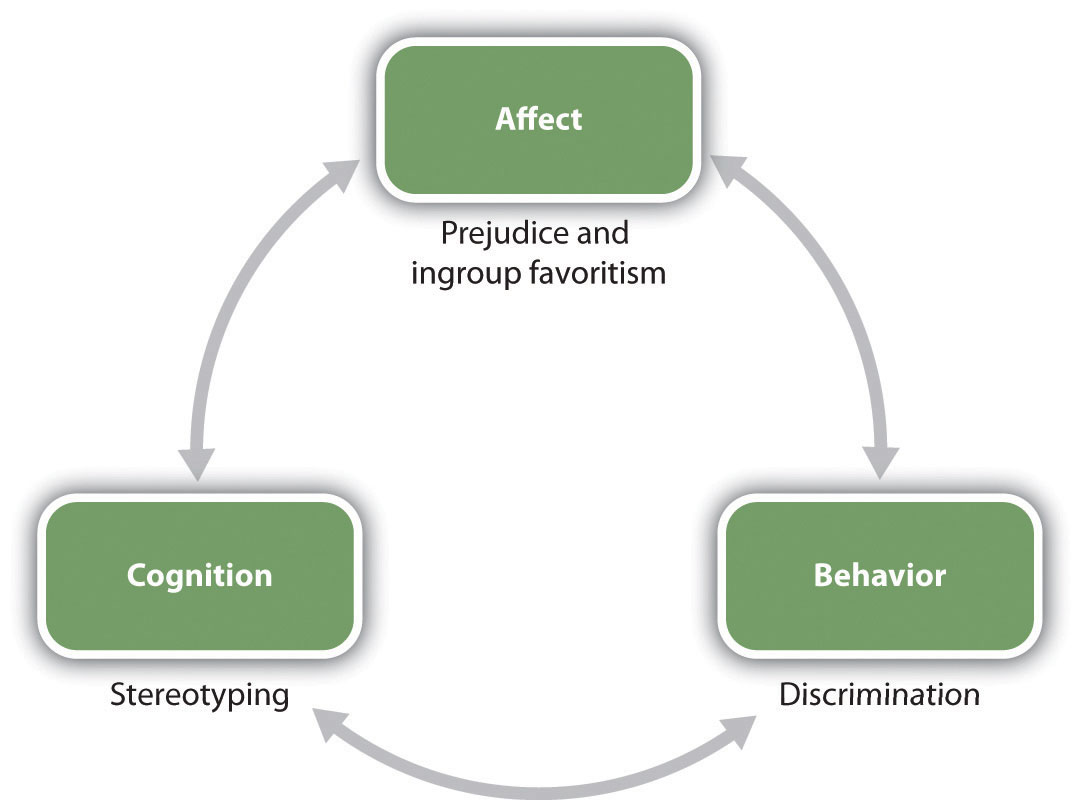The Social Cognitive View of Prejudice Is Best Described as
The process of learning desirable and undesirable behaviors by observing others then reproducing learned. Prejudice occurs when someone holds a negative feeling about a group of people representing the affective component.

Prejudice And Discrimination Prejudice Ppt Video Online Download
Prejudice and Social Cognition Prejudice is defined as negative attitudes toward the members of specific social groups.

. Stereotyping and prejudice begin from social categorizationthe natural cognitive process by which we place individuals into social groups. Social Psych- Quiz 3 -prejudice. The theory views people as active agents who both influence and are influenced by their environment.
Prejudice springs from equal rather than unequal social status. But Janes best friend Cathy has an eating disorder. B the belief that victims of misfortune deserve their fate.
Exploring social cognitive dimensions of sexual prejudice in Filipinos. The preference we give to in-groups. Social cognitive theory was developed by Stanford psychologist Albert Bandura.
Social psychology social cognition stereotyping prejudice social neuroscience racism sexism. The unique feature of SCT is the emphasis on social. Well Earned Reputation Theory.
Early social stereotyping research described racial and ethnic. ASocial institutions and policies dont support prejudice. C the need to perceive the world accurately and conform to in-group demands.
The categorization of people into groups. These are A quicker information processing and a more coherent world view. Described the black essay-writer in more stereotypical terms and.
The social-cognitive developmental theory of prejudice sees internal child characteristics as the major driving forces of developing intergroup attitudes SCDT Aboud 2008. Social Cognitive Theory SCT started as the Social Learning Theory SLT in the 1960s by Albert Bandura. Well Earned Reputation Theory 2.
D the tendency to favor members of ones own group. BA group that enjoys social and economic superiority often uses prejudicial beliefs to justify its privileged position. This involves the belief held about a group.
CChildren are brought up in ways that foster or reduce prejudice. A emphasizes the effects of observing others on students thoughts and behavior. An influential viewroughly analogous to a Humean theory of actionis.
It is intended. Our tendency to disparage out-groups. People high in social dominance orientation prefer jobs that undermine hierarchies.
Philippine Journal of Psychology 46 19-48. Social institutions sometimes support prejudice through overt policies or through unintentional inertia. The Social Cognitive Theory.
DReligious communities can sustain or reduce prejudice. Social categorization influences our perceptions of groupsfor instance the perception of outgroup homogeneity. As I present it the social-cognitive account is cold It is purely cognitive rather than emotional or motivational.
- Prejudice is a socially shared judgment or evaluation of the groups including the feeling associated with that judgment. Identification with similar others. From a social cognitive perspective the first step toward prejudice is.
O the tendency to favor members of ones own group a fearful suspicion of people one has never met an unfustifiable attitude toward a group and its members an act that is based on stereotypes. Prejudice is best described as. B emphasizes the strategies that students use to solve interpersonal problems.
B social identity benefits and self-esteem enhancement. Tajfels social categorization perspective suggests that we are motivated to show in-group bias for two reasons. It developed into the SCT in 1986 and posits that learning occurs in a social context with a dynamic and reciprocal interaction of the person environment and behavior.
No one ever paid much attention to her. The best-known example of cognitive stereotype measurement is the Implicit Association Test Greenwald McGhee Schwartz 1998. A prejudicial attitude is linked with evaluation.
As noted above our thoughts and feelings lead to behavior and so discrimination is when a person acts in a way that is negative against a group of people. Jane has always been pretty plain and she gets lost in the crowd easily. Social cognitive theory is best described as a view of learning that.
Prejudice is best defined as A a perceived incompatibility of actions or goals. Social cognition is not simply a topic within social psychologyit is an approach to studying any subject with social psychology. Cognition Stereotyping 2.
A major component of the theory is observational learning. Stereotypes are cognitive and are beliefs shared by members of one group about the shared characteristics of another group. Developed by Zawdaki this theory attempts to explain prejudices by putting emphasis on the influence of group and society.
Aboud argues that. Social Cognitive Perspective. Using a social-cognitive perspective researchers can study a wide range of topics including attitudes person-perception prejudice stereotypes self-concept discrimination persuasion decision-making and other areas.
These beliefs will be in the from of stereotypes common but oversimple views of what particular groups of people are like. Men with more advantages than women. C an unjustifiable usually negative attitude toward a group and its members.

David Myers 11e Chapter 9 Prejudice Ppt Video Online Download

Prejudice And Social Sources Of Prejudice Mass Communication Talk

No comments for "The Social Cognitive View of Prejudice Is Best Described as"
Post a Comment